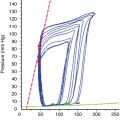Preservatives in local anesthetic solutions
Although allergies to local anesthetic agents are rare, they do exist, and allergic reactions to aminoester local anesthetic agents are more common than are reactions to aminoamide local anesthetic agents. Regardless of the subclass of the agent, local anesthetic preparations often contain additives that are intended to prolong their shelf life. Some adverse reactions after administration of local anesthetic agents may be caused by these additives (Table 118-1).
Table 118-1
Function and Possible Toxicity of Preservatives Used in Local Anesthetic Agents
| Preservative Class | Function | Possible Toxicity |
| Sulfites | Antioxidant | Anaphylactoid reactionArachnoiditis |
| EDTA | Chelating agent | Low back pain at epidural injection site |
| Methylparaben | Antimicrobial | Anaphylactoid reaction |





